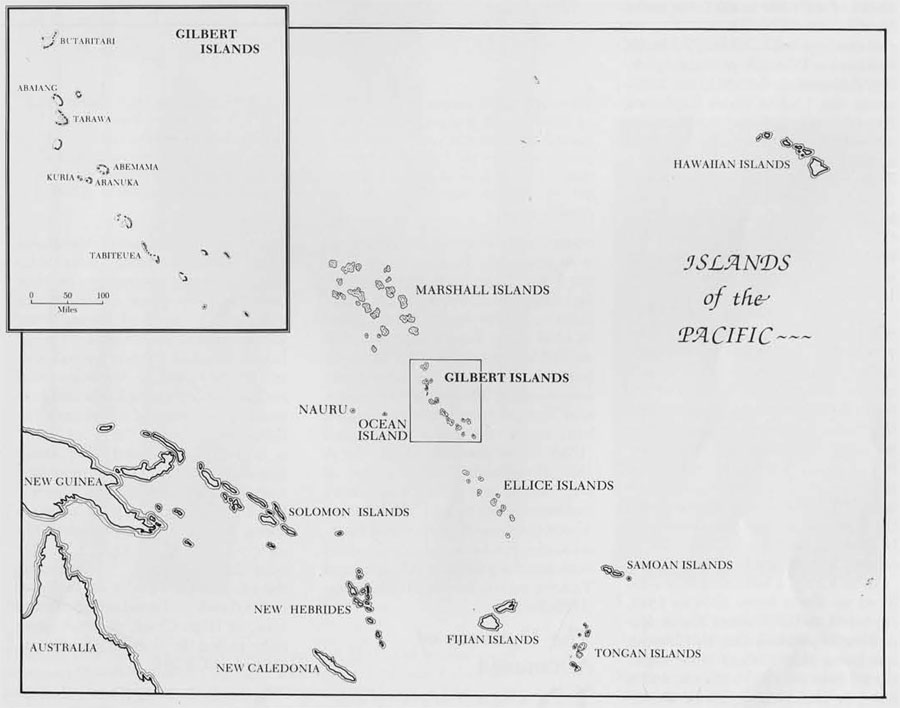
The Gilbert Islands are sixteen coral atolls in that part of the Pacific known as Micronesia (the region of “small islands”). Lying across the equator, they form the middle of a long chain which includes the Marshall Islands to the northwest and the Ellice Islands to the southeast. They are typical atolls, with few notable features: “the low horizon, the expanse of the lagoon, the sedge-like rim of palm-tops, the sameness and smallness of the land, the hugely superior size and interest of sea and sky” (Stevenson 1891:222). Natural resources are extremely limited, and before European contact materials for the manufacture of objects for daily living came largely from the pandanus and the coconut palm, and from the sea.
After Spanish sightings in 1537 and 1606, most of the islands in the group were discovered by Europeans between 1765 and 1824, the last two being reported by whalers in 1826 (Maude 1968:35-133). Exploitation of “on-the-line” (i.e., equatorial) whaling grounds began in the 1820s, and at that point “the isolation of the Central Pacific Islands was effectively ended: from being the least known region of the ocean, with a sail in sight scarce once in a decade, it became almost overnight the most frequented of all, visited each year by several hundred vessels” (Maude 1968:121-122).
Traders sought bêche-de-mer (an edible sea-slug, used as a luxury food in China) and turtle-shell in the Gilberts in the 1830s, and a profitable trade in coconut oil got under way by the mid-1840s. There were beachcombers and castaways living on various islands of the group by 1835, and Protestant missionaries arrived from Hawaii in 1852. The recruiting of labor from the Gilberts began in earnest in the 1860s. In the early 1870s, the major export changed from coconut oil to copra (dried coconut meat from which oil is extracted).
The Gilberts became part of the British Gilbert and Ellice Islands Protectorate in 1892, and of the Gilbert and Ellice Islands Colony in 1915 (see Fig. 2). They were occupied by the Japanese during World War II, and since 1979 they have been part of the independent nation of Kiribati.
